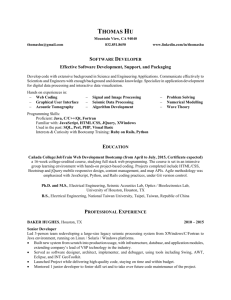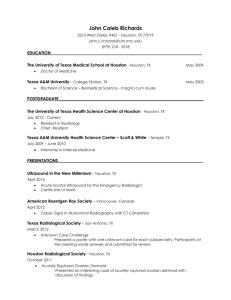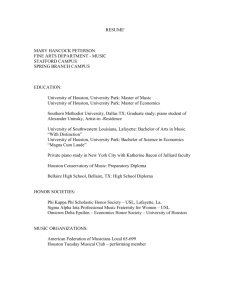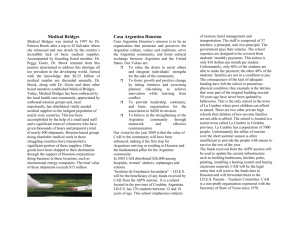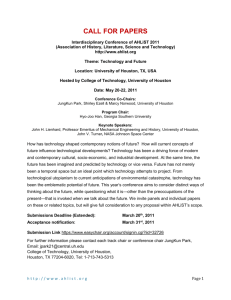High Fidelity Tape Transfer Printing Based On Chemical
advertisement
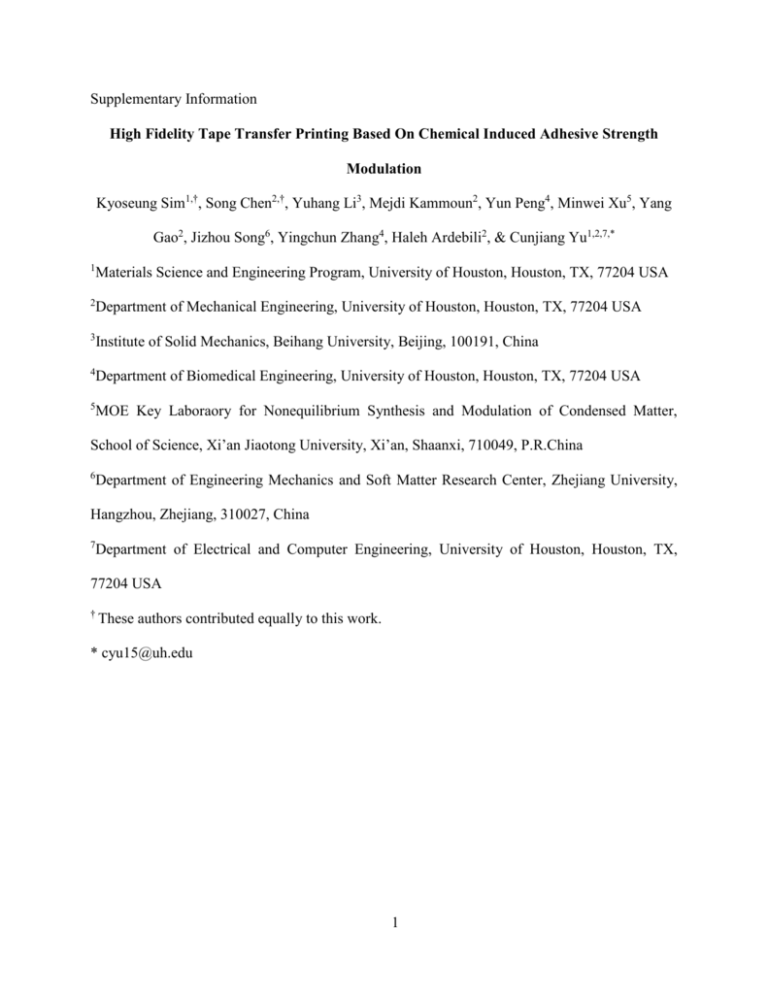
Supplementary Information High Fidelity Tape Transfer Printing Based On Chemical Induced Adhesive Strength Modulation Kyoseung Sim1,†, Song Chen2,†, Yuhang Li3, Mejdi Kammoun2, Yun Peng4, Minwei Xu5, Yang Gao2, Jizhou Song6, Yingchun Zhang4, Haleh Ardebili2, & Cunjiang Yu1,2,7,* 1 Materials Science and Engineering Program, University of Houston, Houston, TX, 77204 USA 2 Department of Mechanical Engineering, University of Houston, Houston, TX, 77204 USA 3 Institute of Solid Mechanics, Beihang University, Beijing, 100191, China 4 Department of Biomedical Engineering, University of Houston, Houston, TX, 77204 USA 5 MOE Key Laboraory for Nonequilibrium Synthesis and Modulation of Condensed Matter, School of Science, Xi’an Jiaotong University, Xi’an, Shaanxi, 710049, P.R.China 6 Department of Engineering Mechanics and Soft Matter Research Center, Zhejiang University, Hangzhou, Zhejiang, 310027, China 7 Department of Electrical and Computer Engineering, University of Houston, Houston, TX, 77204 USA † These authors contributed equally to this work. * cyu15@uh.edu 1 Table 1S Summary of different types of solvents and tapes for tape transfer printing. 2 Figure S1. The illustrations of peeling test. (a), (b) before and (c), (d) after applying acetone. 3 Figure S2. Schematic processes for fabricating Si pellet array and printing them onto a PI substrate using TTP. 4 Figure S3. Schematic processes for fabricating Si photodetector array and printing them onto a PI substrate using TTP. 5 Figure S4. Schematic fabrication process for a skin mountable epidermal EMG sensor. 6 Figure S5. (a) Schematic illustration of the modeled system. (b,c) FEA strain contours of the tape and Si (l=125m), respectively, while bent with a bending radius of R = 2.5mm. 7






